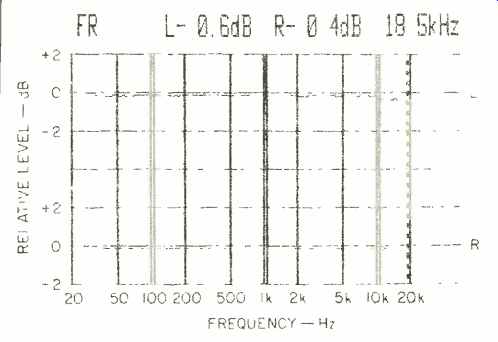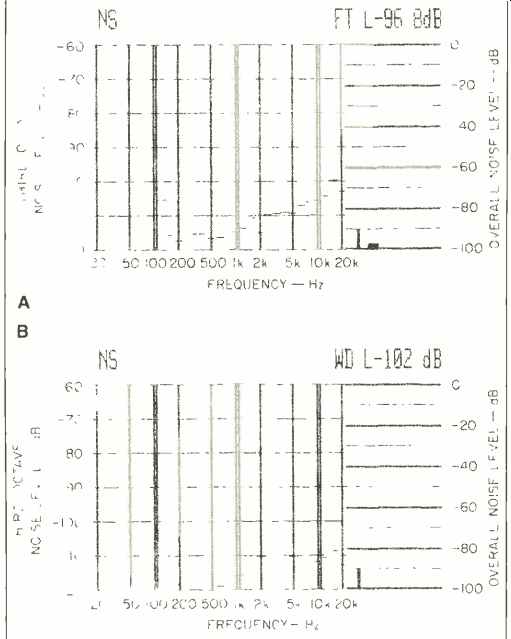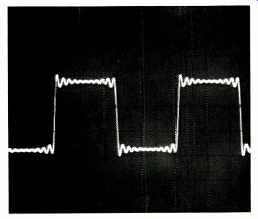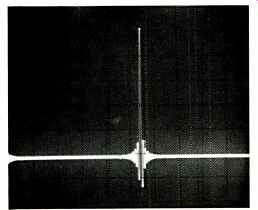
Manufacturer's Specifications:
Frequency Response: 5 Hz to 20 kHz.
Dynamic Range: 95 dB.
S/N: 95 dB.
THD: 0.003% at 1 kHz.
Channel Separation: 90 dB at 1 kHz.
Line Output Level: 2.0 V.
Number of Programmable Events: 27 (see text).
Dimensions: 17.3 in. W x 3.1 in. H x 10.2 in. D (44 cm x 7.9 cm x 26 cm).
Weight: 8.6 lbs. (3.9 kg).
Price: $379.
Company Address: Akai Div., Mitsubishi, 225 Old New Brunswick Rd., Piscataway, N.J. 08854.
Manufacturers of first-generation CD players, some three years ago, were perhaps a bit overzealous in their description of those products. I suppose one can forgive them for using such superlatives as "perfect sound"; after all, the startlingly wide dynamic range and noise-free, distortion-free character of music heard from those first players presented quite a contrast to what had come from analog playback systems. But now, after three generations of players, a number of manufacturers are turning their attention to some of the finer points of CD reproduction that haven't been addressed before, and their players are reaching new levels of performance.

Fig. 1--Frequency response, left (top) and right channels.

Fig. 2--S N analysis, both unweighted (A) and A-weighted (B).
A good example is Akai's top player, the CD-A70. Almost all recently designed CD players employ digital filtering and oversampling, but not all digital filters are alike. Some provide out-of-band attenuation of no more than 50 dB or so. The high-performance digital filters employed in the Akai CD-A70 provide an attenuation of some 90 dB! The use of a three-beam laser is becoming almost standard practice these days, but the servo control systems that respond to deviations from perfect tracking vary widely in design from unit to unit. Akai's servo system is particularly good at maintaining accurate tracking even in the presence of substantial data dropouts, and is extremely well isolated and insulated from the effects of external resonance and vibration. The CD-A70 uses what Akai describes as a new anti-resonant composite metal construction in the chassis cover.
Furthermore, the entire pickup assembly and disc tray are free-floating, suspended from the main chassis by anti-resonant rubber pads which further isolate these parts from external vibration.
Individually, most of these improvements may go unnoticed by the user, but added together they do contribute to audibly better sound reproduction. Improved error correction and tracking accuracy mean that less data interpolation is necessary, even in the presence of minor scratches or dust particles on the disc surface. That, in turn, means more accurate sound reproduction.
One feature that will appeal to many users is Akai's "Natural Logic Operation" system for random programming. (Some earlier Akai CD players had it too.) In addition to the 10 numbered keys usually used for programming, Akai has included buttons labeled "And," "To," "Index," and "With out." These enable you to enter instructions such as "1-To-5-And-7-To-10-Without -9." After this particular sequence, pressing the "Program Start" button will cause the unit to play tracks 1 through 5 followed by tracks 7, 8, and 10.
Index points can also be programmed into the player's memory by following the same sort of logical instructions. A total of 27 steps can be programmed in this manner, but because some steps will call up several tracks, the programming capacity is actually greater than would be the case with a more conventional type of programming.
A number of search and play functions (music search, index search, manual search, A-B repeat, and program skip) are possible. Operations such as track selection and opening and closing of the disc tray can be controlled not only from the front panel but from the supplied remote control. Like so many other CD players introduced recently, the CD-A70 is equipped with a subcode output terminal in anticipation of discs that will create digital graphics (still pictures, text, etc.) when properly interfaced via a future decoder to your TV set or video monitor.

Fig. 3-THD vs. frequency, at three output levels.

Fig. 4-Spectrum analysis of reproduced 20-kHz test signal.

Fig. 5-Separation vs. frequency.
Control Layout
The disc drawer, "Power" button, and headphone jack occupy the left third of the front panel. A multi-function liquid-crystal display at the panel's center shows what mode the player is in. It not only displays total and individual-track elapsed time, track number, and index number, but also indicates when a program is operating. There are even indicators for the "And," "To," and "Without" functions de scribed earlier. The type of repeat play selected is also shown in the display, as are indicators for "Play" and "Pause" modes.
A "Program Start/Pause" button, a "Selected Repeat" (A-to-B repeat) button, a "Clear" button (for clearing a pro gram), and a "Display" button (for altering the display mode) are to the right of the display area. Farther to the right are the numbered random-programming keys as well as the "Natural Logic" keys and a "Repeat" key. Clustered at the right end of the panel are the "Open/Close," "Play/Pause," "Stop," forward and reverse "Skip," and fast-forward and fast-reverse "Search" buttons. A slider control for adjusting headphone output level is at the lower right of the panel.
Measurements
Frequency response to 20 kHz, shown in Fig. 1, was flat within 0.4 dB for the right channel and within 0.6 dB for the left. Unweighted S/N for this player measured 96.8 dB (Fig. 2A); with an A-weighting network added, S/N increased to a very high 102 dB (Fig. 2B). Linearity was accurate to within 0.1 dB from maximum recorded level down to-60 dB and within 1.8 dB down to-80, dB. Output level for a 0-dB (maximum recorded level) signal was 1.94 V, and there was no measurable difference in output levels between channels.
Harmonic distortion is plotted as a function of frequency for three different recorded levels in Fig. 3. Here, the superiority of the Akai's digital filter design is immediately obvious.
While many players produce high levels of "beat" components (often equivalent to several percentage points of distortion) when high-frequency test tones are reproduced, only very minor levels of such beats were observed for the CD-A70 when using a distortion analyzer to measure THD.
In Fig. 3, the dotted lines extending above 10 kHz represent these beat levels; for the maximum recorded level (bottom curve), the beats at 20 kHz amounted to no more than 0.045%. Furthermore, even this low level of spurious output was totally outside the audible frequency range, as you can see from Fig. 4. The Akai CD-A70 is one of only a very few players that I have tested and found to produce such low levels of out-of-band beat components. Actual THD at mid-frequencies measured 0.005% at maximum recorded level, increasing to 0.06% at - 24 dB recorded level and to 0.13% at -30 dB recorded level.
Separation between channels, shown in Fig. 5, was close to 85 dB at mid-frequencies. Again, the attention to detail in designing this unit's analog stages and its wiring layout is apparent from the separation at high frequencies. For most CD players I have measured, separation figures fall off rapidly as you approach the high-frequency end of the spectrum, often decreasing to 60 dB or less. Of course, that's more than enough separation for excellent stereo imaging, but the fact that Akai was able to maintain separation of nearly 80 dB even at 20 kHz speaks well for other aspects of this unit's parts layout and design.
Dynamic range, measured in accordance with the EIAJ Standard, measured 98 dB, 3 dB greater than claimed by Akai. SMPTE-IM distortion was a mere 0.002% at maximum recorded level and 0.017% at-20 dB. CCIF twin-tone IM, using 19- and 20-kHz test tones, measured just 0.0037% at maximum recorded level, increasing only slightly, to 0.0065%, at -10 dB. De-emphasis was accurate to within less than 0.1 dB.
Figure 6 shows a 1-kHz square wave as reproduced by the CD-A70. Notice how much lower the amplitude of the ripple is, compared to some earlier players that also used digital filters and oversampling. As I said earlier, not all digital filters are created equal. A unit pulse, as reproduced by the CD-A70, is shown in the 'scope photo of Fig. 7. The usual time delay between channels, approximately 11.3 µS, is evident in Fig. 8, in which 20-kHz signals from the left and right output channels are superimposed by my dual-trace oscilloscope. The horizontal sweep rate was set to 10 µS per horizontal division, and the delay between the two traces confirms that Akai is using a single D/A converter in this player.
With all the sophisticated servo tracking systems and anti-resonant, vibration-resistant construction found in the CD-A70, I was not at all surprised to find that it managed to play through my standard defects disc without ever mistracking.
The player was also particularly impervious to external vibration. Besides my usual finger-tapping tests on the sides and top of the unit, I mounted the CD-A70 atop one of my reference speaker systems and turned up the volume until I felt a fair amount of vibration from the speaker cabinet being transferred to the player itself. During this test I could detect no difference in sound quality, compared to the sound of the same program material when the player was well isolated from external vibration. (I don't recommend mounting CD players on top of speakers, however, unless you want to conduct this type of experiment.)

Fig. 6--Reproduction of a 1-kHz square wave

Fig. 7--Single-pulse test.

Fig. 8--Time delay between left and right channels at 20 kHz.
Use and Listening Tests
If there are still any of you out there who believe that all CD players sound alike, I commend the Akai CD-A70 to you.
Its refined digital filtering, carefully designed analog output stages, and resonance-resistant construction all contribute to utterly clean and grit-free sound. It delivered that sound even from discs I had previously blamed for such imperfections as rather strident-sounding highs and less than perfect stereo imaging and depth. Of course, not even this state-of the-art player can compensate for the sonic flaws on some of my earliest CDs. Given a reasonably well-recorded CD of recent issue, however, I think you will find that the CD-A70 will deliver highly satisfying sound reproduction, right along with the best of the current breed of CD players.
As for the features that aren't directly related to sound quality, I especially liked the "Natural Logic" programming system. It's easy to understand and easy to use, though there are a couple of ways in which you can upset the system if you don't follow the instructions in the owner's manual. For example, if you tried to enter "1-To-3-Without-2-And-5-To-8-Without-6," the second "To" entry would not be accepted. It seems that the "Without" command can be entered only after the last "To" command. The "Index" command, if used, must come before the "Without" command. For example, "1-And-2, Index-1-And-3" is an acceptable programming order, but "1-To-3-Without-2, Index-2" isn't. The system won't accept the "Index" command in the second example.
There were only two minor flaws in the CD-A70 worth mentioning. I found that the fast-search mode was entirely too fast. You need really nimble fingers when using it, or you'll skip right past the section of music you're looking for. I also found the display a bit hard to read. The display is yellowish amber on black; under certain lighting conditions, you must view it at just the right angle to be able to read it, a problem I think a brighter color might alleviate.
In every other respect, the CD-A70 deserves to be classified as a true fourth-generation CD player, incorporating just about all the improvements that manufacturers have learned to effect during the short history of the Compact Disc.
--Leonard Feldman
[AUDIO magazine/June 1987]
Also see: Akai CD-M88 Compact Disc Player (Mar. 1986)
[adapted from Audio magazine]